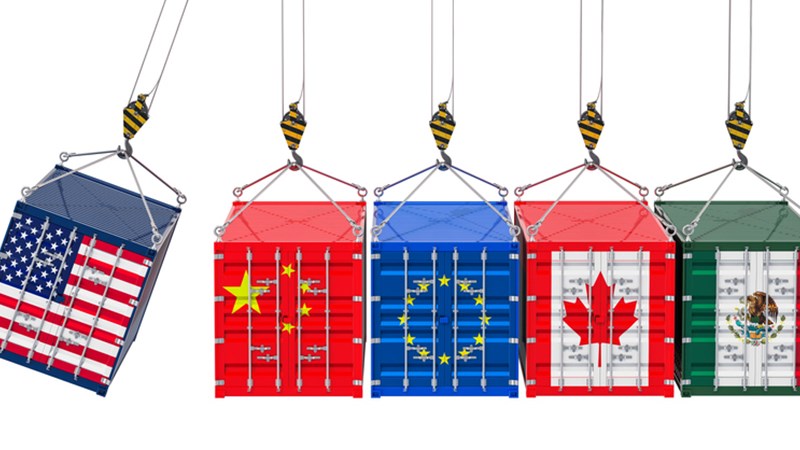Bills of exchange under Dutch law: legal and practical issues
October 2023
Introduction
A bill of exchange (‘bill’; in Dutch: ‘wissel’ of ‘wisselbrief’) is a (usually short-term) negotiable instrument which was created to solve the problem of how a buyer (in one country) could transfer the price of goods to a seller (in a different country) at a future date. Having been in existence as financial instruments since the 13th century, bills are one of the longest serving financing instruments which are still used in international trade finance.
A bill is an irrevocable undertaking by the buyer who accepts to pay the holder of a bill at a certain date. Bills are governed by specific rules in respect of their form and execution as well as the transfer of rights in respect of bills.
This article sets out some legal aspects of a bill under Dutch law and briefly touches upon the practical question of the ‘physical loss’ of a bill and the consequences thereof.
Legal aspects
Parties involved
A bill is a document under which A orders B to pay an amount of money to C on demand (a ‘sight’ bill) or at a future date (a ‘term’ bill). The person giving the order to pay and signing the bill is referred to as the ‘drawer’ (in Dutch: ‘trekker’; typically the exporter/seller). The person to whom the bill is addressed (the person who has been ordered to pay the amount) is referred to as the ‘drawee’ (in Dutch: ‘betrokkene’; typically the importer/buyer of the goods). The person named in the instrument to whom or to whose order payment has to be made, is referred to as the ‘payee’ (in Dutch: ‘nemer’ or ‘begunstigde’). The drawer (A) and the payee (C) can be the same parties (e.g. the seller), but the payee can also be a third party to whom payment has to be made (e.g. the bank). The drawee who accepts the bill is known as the ‘acceptor’ (in Dutch: ‘acceptant’).
Applicable law
The Netherlands is a party to the Convention Providing a Uniform Law for Bills of Exchange and Promissory Notes (‘Convention’, Geneva, 1930). The Convention provides for a fragmented set of rules regarding the applicable law, which is not always applied consistently in (Dutch) case law. Basically, the legal consequences of a bill for the acceptor are determined by the law of the place in which this instrument is payable (stated on the bill, or in the absence thereof, the place of the drawee).
Formal requirements
Under Dutch law the following requirements for the form of a valid bill can be distinguished and should be inserted in the bill: (i) the term ‘Wisselbrief’ (English: bill of exchange); (ii) an unconditional order to pay a determined sum of money; (iii) the name of the person who has to pay has to be included (the drawee); (iv) a statement of the time of payment; (v) a statement of the place where payment has to be made; (vi) the name of the person to whom or to whose order payment has to be made; (vii) a statement of the date and of the place where the bill is issued; (vii) the signature of the person who issues the bill (drawer).
Practical use in international trade
A bill is a negotiable or transferrable instrument, providing its key practical use in international trade transactions, (and) being traded like commodities. In practice the drawer (the exporter) will often transfer the bill to the drawee’s (importer’s) bank by granting physical possession of the bill and endorsement. The bank will present the bill for acceptance to the drawee. As the acceptance of the bill by the drawee will be a condition for having the bank’s credit, the drawee will sign and ‘accept’ the bill. Having accepted the bill, the acceptor is obliged to ‘honor’ the payment obligation under the bill.
Payment guarantee by the drawer
Under Dutch law – as a rule of mandatory law – the drawer guarantees payment under the bill; as such the bank will have a claim (for payment) not only against the drawee, but also against the drawer. This is different under English law, which provides for the possibility to exclude the drawer’s ‘warranty’ (by including terms as ‘without recourse’ or ‘sin obligo’ after the name of the drawer). Pursuant to Dutch law an extra guarantor (in Dutch: ‘avalgever’ or ‘avalist’) can be added by his signature on the bill or by means of a separate document. Such suretyship (in Dutch: ‘Aval’) makes the bill more valuable on the financial markets.
Protection of the successive holder/third party
Legally qualifying as a negotiable instrument, the holder in due course or the successive holder/third party (here: the bank) is ‘not bound’ by the underlying relationship between the acceptor and the original drawer/holder. So, although the acceptor can oppose enforcement of a bill by invoking such ‘personal defences’ against the original drawer/holder, the acceptor can only invoke ‘absolute defences’ against the successive holder/third party. Absolute defences refer to (i) defences based on the text of the bill; and (ii) the false signature of the acceptor. This makes the bill a valuable instrument for sale on the financial markets.
Physical loss of a bill
The bill is a ‘drawn security’. It embodies, after acceptance, the payment undertaking of the acceptor to the drawer/successive holder. Basically, the acceptor should pay at the determinable date upon presentation of the bill. However, the close connection between the ‘(claim) right’ and the ‘paper’ (the bill) does not mean that the (successive) creditor who no longer physically holds the instrument is always without any rights. In case of a ‘physical loss’ of a bill, two situations can be distinguished.
First scenario
If the creditor proves that (i) he qualifies as the (successive) creditor; (ii) he is unable to show (‘to deliver’) the bill physically to the acceptor (for payment purposes); and (iii) that it is impossible that another person (after him) has obtained ownership because the paper itself has been extinguished – evidence thereof will be key –, its rights of claim under the bill remain unaffected.
Second scenario
If the bill has been lost, but any proof that the bill has been extinguished is lacking, the solution is the same as the practice of lost bills of lading: the (successive) creditor can only claim payment against the acceptor in return for providing security for damages in case the debtor/acceptor is confronted with a third party (a holder in due course) presenting the bill. In practice this boils down to negotiations between the parties regarding the duration of the security (bank guarantee) to be provided.
Providing a (scanned) copy of the bill without holding the original version is not sufficient. Basically, negotiating a bill of exchange under Dutch law requires i) the granting of physical possession of the original bill; and ii) endorsement. However, there is an exception under Dutch law in case the creditor does no longer ‘holds’ the original bill but still remains the entitled party to claim under the bill. In such cases, negotiating a bill of exchange can take place through assignment of rights with notice to the debtor (instrument of assignment and notification of assignment) or assignment of rights without notice to the debtor (authentic instrument or registered private instrument).
Concluding remarks
Bills of exchange remain a key trade finance instrument nowadays. From a Dutch conflict law (private international law) perspective the various applicable law aspects will be governed by the Convention Providing a Uniform Law for Bills of Exchange and Promissory Notes. Dutch law relating to bills of exchange can be characterized as (very) formalistic. This also relates to rules related to the collection of the bill, which may heavily affect the successive holder’s claim rights.
In case of any questions related to bills of exchange please contact our commodity trade specialists Frank Salome and Steven Oude Alink.










